Images
- Selection of Sandwiches (Courtesy of Caffé Mulassano)
- Selection of Sandwiches (Courtesy of Caffé Mulassano)
- The Fountain (Courtesy of Caffé Mulassano)
- The Caffé Mulassano
- The Counter (Courtesy of Caffé Mulassano)
- The Counter
- The Plaque
- The Clock
- Ceiling with central parts of leather Madeira
- Counter (Detail)
Suggested Readings
- Alan Davidson, The Oxford Companion to Food, Oxford University Press.
- Solomon H. Katz et al., Encyclopedia of Food and Culture, Thomson Gale.
- Massimo Montanari, Il cibo come cultura, Laterza.
- Massimo Montanari, Italian Identity in the Kitchen, or Food and the Nation.
Suggested Sites
Music Credits
- Main Theme – Valerio Mirone
- Jazzy Detective – John Bartmann
- Angled Inside – Unheard Music Concepts
- La Madeline au Truffe – Jeris
- Tsuneni – sawsquarenoise
Transcription
What you’re hearing now, is the sounds of high heels on marble. It’s half past midnight and the Regio Theater in Turin has just closed his doors. The opening night has been a success, apparently, everyone enjoyed the play. The cast performs the usual dance: on and off the stage four times, five times. But now, everyone has left except for one young lady, whose paces echoes under the dim-lit portico. She’s speeding towards one end of the passage: she doesn’t feel unsafe, no one is chasing her, however, she has one compelling reason to sprint through the sleeping city.
If we had better microphones, you would hear her stomach grumbling – she is hungry. But where can she find a safe haven this late at night? Is any cook behind the stoves at half past midnight in the old city of Turin? Good for her, she has a guiding light, a beacon that attracted late-night gluttons for more than a century: the lantern outside the Mulassano café is lit, the door is open. What a relief, our lady is finally feasting on the forty different kinds of sandwiches the Mulassano café offers. Why so many? The reason is simple: Angelina Nebiolo, the former owner of the establishment, crafted here the very first sandwich or “tramezzino”, as they’re called in Italy. The date was nineteen twenty-six.
Wait a moment: can this story be true? Can we rightfully state that tramezzini belong to the Italian culinary tradition? More: can we claim that they were born out of Italian creativity? Is possible that no one, before 1926, has ever tried to put a slice of ham between two loaves of bread? …Yes and no. The story is a tad more complex actually. But, do not worry, this often happens when you unravel old facts. We’ll get to the bottom of this. Please, bear with me, this story comes from Ars Dicendi and today we’re dealing with Italian Culture.
Piazza Castello is Turin’s most prestigious square: one portico runs alongside the perimeter of the square so that you can cross the area without getting wet in rainy days. You got one castle right in the middle of the square, one royal palace lies on one corner while the Regio Theater occupies the other one. The southern corner is illuminated by the Mulassano’s lantern we already met. Gently swinging in the middle of the portico, it can be considered the ancestor of the “We’re Open” neon sign. They hung it there to signal whoever comes out of the Regio Theater that the café is open, even late at night. Let’s walk in.
The café is small in size, just thirty-one square meters, but flamboyant in style. Join this petit tour by checking the photos we published on our site, italianculturepodcast.com.
The lights are the first thing you notice: the café is shimmering. The whole structure is an art deco alternation of wood and mirror that duplicates both natural and artificial light. The windows are so wide and transparent, the frames so thin – that it seems there’s no barrier between the inside of the café and the portico. And that’s one of the attractions that helped caffè Mulassano win so many customers in the past: it offers the chance to observe passers-by and, more importantly, to be seen, sitting at one of the most glamorous spots in town. Here’s how it worked according to Patrizio Abrate, the actual owner of the café:
Several celebrities were regulars. Guido Gozzano, the poet, used to sit at our tables and look out of the windows. He observed the madamine, that is the young seamstresses that passed by. He looked at them while they rushed to their sewing machines in the ateliers just around the corner.
The small, round tables are few in numbers, so many clients wait to be served by the old counter, a magnificent slab of marble encrusted with brass decorations. In the center of it, you can see a graceful stone fountain that constantly drips one drop of water in the glasses below: it’s a clever mechanism that serves free water to those enjoying an espresso at the counter.
Another clever – or someone may say “devilish” – mechanism commands the ancient clock behind the counter. You can never tell the time on that clock because its purpose turns out to be quite different. Again, Patrizio Abrate:
And then there’s also the clock. One can see it, up there, on the left behind the counter. It’s a bizarre clock, isn’t it? It looks like a normal clock except for the hands – well, THE HAND. It has only one hand. Oh, and the numbers on the dial follow no order at all. There’s an electrical mechanism that moves the hand: to activate the mechanism, one has to push a small button, next to the cash register. You may wonder what this crazy clock is for. It’s quite useful to be honest because it picks who’s gonna pay the bill. Let’s say a group of friends had one round of aperitif. Then they gather by the cash register and each one pushes the button: the hand starts spinning and stops at random. Whoever hits the highest number is the lucky chap who’s going to pay for all.
Amongst all the luxurious equipment, the mirrors, the lights, a broad cabinet will draw your attention. To be fair, it’s more a shrine than a common cabinet because it holds the very culinary heart of the café. We are talking about tramezzini, each one hand-crafted according to its own recipe. Cristiano Ruggiero, the bar manager, gives us some numbers:
We currently offer more than forty kinds of tramezzino. Some of them, we inherited from the recipe book of Angelina Nebiolo, while others are more innovative. For instance, we just invented the garibaldian, inspired by Garibaldi. The ingredients are quite simple: dried tomatoes, capers, and olives. Then you have the Piedmont experience: truffle and anchovies, truffle and mascarpone, tongue in salsa verde, anchovies in salsa verde and, of course, – THE classic – vitel tonné. We prepare almost every tramezzino in-house, using top quality seasonal ingredients.
Even if there’s a generous amount of filler, tramezzini only measure five for seven centimeters. This way, you can hold them with just one hand while the other pours a drink. Be warned though, one lonely tramezzino won’t fill your stomach if you’re hungry: in the end, they’re not made for that. Tramezzini embody the Latin concept of Levitas, which later transformed into the Dolce Vita lifestyle. In some way, they are easy food because they ease your life by delivering a small amount of nourishment between two meals. However, this kind of light, carefree food is not a superficial product. On the contrary, healthy tramezzini are not an easy achievement. Among others, they require two things. First, they ask you to carefully select the ingredients. Secondly, an attentive approach to preparation is the key to the perfect tramezzino. By cutting the crusty edges off the bread loaf, Angelina Nebiolo freed the tramezzino from its earthly constraints so that it could freely float into the mouth – just bread and savory filling. This gustative experience is ordinary stuff for us now, but it was considered an absolute novelty in 1926, when Angelina Nebiolo conquered everyone’s palate. A metal plaque hung on the cabinet, is very eloquent. It says:
“In nineteen-twenty-six, Mrs. Angela Demichelis Nebiolo invented the tramezzino”
So, the tramezzino, or sandwich, was invented in the first half of the twentieth century by one simple bar-owner in Turin, Italy. Let’s look into that.
Marketers know this rule by heart: to make good profits you need a) a product that satisfies someone’s needs b) a strategy to make this product known to the people whose needs are to be satisfied. Our case is no exception. There are two players behind the tramezzino invention – the one who crafted the product and the one who forged the myth.
We already met the first one – Angela Nebiolo. She bought the Mulassano Café from the Mulassano family for the equivalent of 270.000 dollars. Angela and her husband, Onorino Nebiolo, decided to relaunch their newly bought business by enhancing the happy hour sales. They noticed that, besides drinking cocktails and liquors, clients were looking for something to snack on. Normal dishes were too much to handle, especially before a meal, so she put in good use the toaster she brought back from her trip to America and started toasting bread. But besides toast, another product seemed to attract the attention of the people from Turin: two loaves of bread and filling in-between. The success was stellar.
Wait a second though, I just slipped one nugget of information that makes this history more complex. Let’s rewind the tape. So she put in good use the toaster she brought back from her trip to America. Angela and Onorino were expats in the US before they came to Italy and acquired the Mulassano Caffè. Patrizio Abrate sheds some light on that period.
Angela and Onorino met in Detroit when Angela was fourteen years old – then marriage and two sons. They worked in the business of bar management since the beginning: they opened a few restaurants in Detroit – Italian restaurants, needless to say. After they gathered a small fortune, they moved back to Italy. Apparently, Angela was homesick and missed her hometown too much. That’s how they swung back to Turin and bought the café from Amilcare Mulassano.
They worked in restaurants and bar, they learned how to use a toaster, which – by the way – was cutting edge technology back then. They certainly had several close encounters with sandwiches and toasts, the same sandwiches they invented when they came back to Italy, the ones Italians call “tramezzini”. How does this story work? Can you invent something that already exists?
The idea behind the sandwich is old as the hills. In the Middle Ages, for instance, people used slabs of stale bread as plates. The food dropped its fluids and softened the dry fabric of the bread, thus making it edible in time for the end of the meal. The first appearance of the term sandwich in its modern sense is found in Edward Gibbon’s journal who, in 1762, refers to “bits of cold meat” as a “Sandwich”. The name comes from John Montagu, Earl of Sandwich, who once ordered his valet to bring him meat, tucked between to pieces of bread. Someone claims that Lord Sandwich used to consume this form of food because it allowed him to sit at the table and continue playing cards. According to another version of the story, the sandwich was born out of frugality, for the Lord’s work kept him at his desk for long hours.
Nonetheless, sandwiches caused an instant sensation on the English high society, which adopted them as a late-night meal. After that, the nineteenth century rapidly became a sandwich-dominated era: the rise of the working class made evident that a growing mass of people needed fast and economical food.
The sandwich and the idea behind it were born well before Angela Nebiolo moved to the USA and imported the product to Italy. So how could she rightfully claim to have invented the tramezzino?
We should frame the question more clearly: “Angela Nebiolo did invent the tramezzino?”. Let’s focus on the “invent” part first. The verb “to invent” comes from the Latin “invenio” that means “I find, I discover, I get to know”. It implies that for something to be invented, it needs to exist in the first place. “Invention”, then, is not a perfect synonym of “creation” that, in turn, means to bring something into existence, out of nothing. When we invent something, we find a thing that is already there. So, where’s the “inventive” part? Where the original ideas, the innovative thought come into play? To answer this question we should take a quick detour.
We use to look at the Italian cuisine as a granitic model, something coherent, stable and deeply rooted in the Mediterranean basin. However, Italian cuisine, as each and every cultural product, is the ultimate fruit of a long and tortuous process. It’s quite difficult to reconstruct the historical dynamics that led to the formation of the actual Italian cuisine. For argument’s sake, we just need to bear in mind three points: – one – Italian cuisine evolved – two – it doesn’t exist as a national entity and – three – it’s the convergence point of several external influences.
In which way cuisine can evolve, one may ask at this point? Well, let’s just say that if you had a meal in fourteenth-century Italy, you wouldn’t have eaten the same stuff you find in a modern Italian restaurant. Back then, chefs used different recipes, relied on different ingredients. This leads us to the second point: cuisine in Italy has always been local – not regional, not national – local. Each town, each village has its own recipes because people have traditionally harvested ingredients from the neighboring areas. Nowadays we often think of Italy as the land of pasta and pizza because you can have fine pizza and pasta anywhere in the country, but that was not the case in times past… By the way, if you’re interested in the history of Italian food, you might want to check the suggested readings on our site: italianculturepodcast.com. You’ll notice that Italian cuisine hasn’t always been formalized in the rigid form we’re now used to. These days, many people adopt a purist perspective on the Italian culinary identity, condemning the experiments involving Italian recipes: vegan carbonara, pineapple pizza, fettuccine Alfredo – these dishes may all look awful to Italian eyes but still follow the same route Italian cuisine took centuries ago. The development of Italian cuisine has indeed been deeply corrected by an infinite set of stimuli that crossed the Alps, traversed the sea and landed into the Country. Influences from the far and Middle East, ideas from France, techniques and diet from the Anglo-Saxon world – Italy has always chewed, swallowed and digested the food that came from abroad. Ingenious cooks mingled foreign influences with local ingredients and created long-lasting traditions. In some way, they replanted culinary experiences from abroad into Italian ground…That’s what happened with sandwiches too.
In retrospect, it’s clear that Angela Nebiolo re-elaborated the sandwich in several ways in order to make it palatable to her clients. She enhanced the recipe’s potentiality while discarding what didn’t fit into Italian custom. First, she kept the form-factor – a light, quick snack. Then, she introduced the product to a different social segment – the upper/middle bourgeoisie who used to hang out at her bar. She modified the way sandwich was consumed – the tramezzino became a treat to have between meals, perhaps with a cocktail on the side. It would have been quite unlikely for one of her customers to switch a meal with a tramezzino. Cristiano Ruggiero tells us how old eating habits shaped the first selection of tramezzini the café offered:
In the early days of the Mulassano café, you would have found only a few tramezzini on the menu. Eating habits were just different. People didn’t normally have lunch or dinner at the Café, so there was no need for elaborate recipes. Simpler times call for simpler tramezzini: salami tramezzino, butter and anchovies, al verde anchovies, veal with tuna sauce, artichokes, tomato and mozzarella.
So, Angelina Nebiolo adapted her recipes to the customers’ taste. She introduced many local ingredients that came from the “merenda sinoira”, an old Piedmontese tradition. Merenda sinoira can be considered the ancestor of the modern happy hour with free food. In the old days, farmers and grape harvesters worked until night so, around six PM, they had a snack. While drinking red wine, they ate a bit of every food they brought with them, like bread, salami, cheese, omelet, anchovies, Russian salad, vitello tonnato, coleslaw and so on. Angela Nebiolo filled her sandwiches with these ingredients, thus finding a new way to consume traditional food. In this sense, she can rightfully claim to have invented the tramezzino, since she found something – the sandwich – and transformed it into a new Italian product – the tramezzino. This sort of culinary translation is certainly worth the plaque you find inside the Mulassano café. In the end, plaques tell us where something new and noteworthy has emerged, they indicate a discontinuity in the daily routine. So, in a certain sense, we’re not dealing with a rebranding operation – from sandwich to tramezzino. When Angela Nebiolo claimed to be the inventor of the tramezzino, she raised a historical issue – a small one, sure – but still a historical one.
And, by the way, Angela Nebiolo never talked about sandwich: she was proud of her invention – the tramezzino… This name introduces us to the second person who played a big role in the tramezzino invention, that is the one who made this humble snack known to every hungry person in Italy. His name is Gabriele D’Annunzio
Writer, poet, journalist, playwright, army officer, politician – Gabriele d’Annunzio was probably one of the most influential figures in early Twenty-century Italy. He had one rockstar-like life before rock&roll was even born. People loved and hated him because he had several affairs with famous actresses, while being considered a world war one hero. He certainly was one energetic political activist. Once, after the war ended, he led a few thousand troops to Fiume, a small town in Dalmatia which used to be Italian land before the Paris Conference. He then conquered Fiume and run an Italian Independent State for a few months. Besides his adventurous life, Gabriele D’Annunzio is nowadays remembered for being a Poet Laureate. His work oscillated between decadentism, symbolism, and aestheticism. People called him “il vate” that is “the prophet”, someone who foresees and shapes the future with his own words. And, to be honest, that’s exactly the case with the tramezzino affaire.
Legend tells that one morning Gabriele D’Annunzio was sitting in the Mulassano café, focused on his writings, sipping an aperitif and nibbling at some sandwiches. He enjoyed the snack and quickly emptied the plate. The poet turned himself towards the counter to ask for more, but at that point, he found himself to be in quite a pickle. How he, an hyper-nationalist vate, could use an Anglicism, how his brave Italic mouth could pronounce the heinous word – sandwich. That’s when his ingenuity kicked in and, without even stuttering, exclaimed: “Bring me some more of these tasty tramezzini” … Tramezzini – he created the word out of nothing. Until then, nobody had called those tiny snacks tramezzini. You might have heard the word “panino”, “paninetto” – the bravest clients opted for the English version, asking for “a sandwich”. But, again, D’Annunzio was the one who coined the term… Or, at least, so it seemed. Francesca Dragotto, a professor in linguistics at the University of Tor Vergata, Rome, has a different opinion on the matter:
According to each and every Italian etymological dictionary, the term tramezzino has been coined by Gabriele D’Annunzio. And Angela Nebiolo had no role in the process. This is a fishy story, you know, something is not right here. It seems to me that this case is one occurrence of that old, unfortunate habit of dictionary compilers. I’m talking about the outdated way of gathering information: did you find the first occurrence of tramezzino in D’Annunzio’s work? Then D’Annunzio has to be the one who coined the term. It’s very likely, in fact, that D’Annunzio just heard the name when he visited the Mulassano Café and enjoyed his deal of tramezzini. The word had already been coined by Angela Demichelis Nebiolo. Let’s say D’Annunzio was responsible for the tramezzino’s luck. Being a poet and a prominent intellectual figure of that time, he found himself in the position to amplify the tramezzino’s resonance. He made it a famous term and more, he introduced tramezzino into the everyday vocabulary. Of course, this situation isn’t fair to Angela Nebiolo, at least from a linguistics standpoint. She couldn’t advertise the coinage on a national level, so now we cannot claim that she was the one who coined the word. While I’m not 100% sure about my hypothesis, I can disclose that by doing a bit of digging I uncovered some corroborating clues. Those clues led me to think that perhaps neither Angela Nebiolo was responsible for the coinage of the word. I’d say that she granted more visibility to the term tramezzino, a term that could have been in use before and beyond her, in different social contexts. The word tramezzino comes from tramezzo, that is the partition wall. Tramezzino – Tramezzo. And tramezzo is a centuries-old word. Now, Angela Nebiolo crystallized the relation between the word – tramezzino – and the exact recipe. She distinguished the tramezzino from any other recipe that involved filling between two pieces of bread.
Language and cuisine, here, go hand in hand. When you translate a word that has never been rendered into your native language – your world, your habits meet the experiences behind the foreign term. The same happens when you reinterpret a recipe from abroad: your culinary world ends up meeting an ensemble of traditions the new recipe brings along. Poets and chefs are the ones who bridge these two worlds – what’s familiar and what’s exotic. They drag the first world into the second one and find a way to make the two work together. Sometimes they smooth the edges, often they retune some elements. The result – be it a recipe or a word – shows some connection to the old while being rooted in the new.
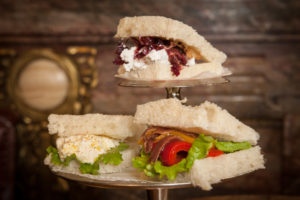
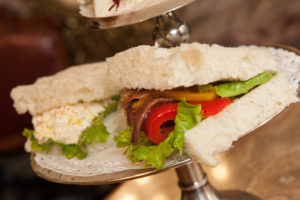
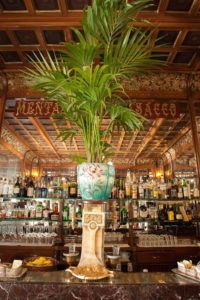
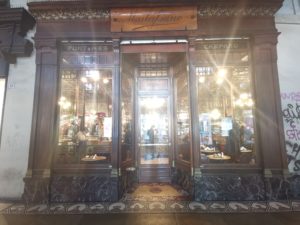
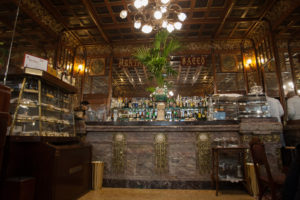
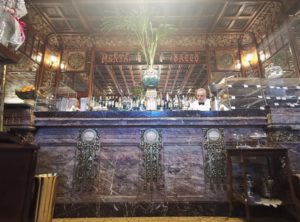
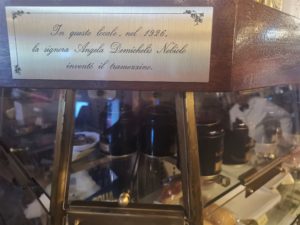





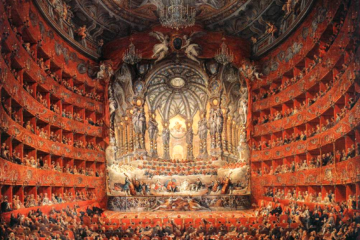
0 Comments